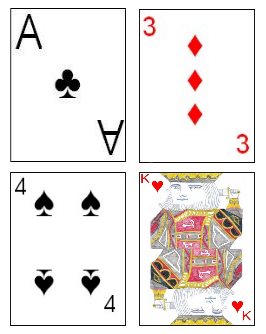
There are many kinds of golf clubs. The most common types are the drivers, fairway woods (Hybrids), irons, irons, and hybrids. The type you choose depends on your game, preference, and skill level. Woods are perfect for long drives and can be used by players who have difficulty keeping the driver straight. They can also be used in the fairway if you are far from the green. They're less forgiving than short irons so there is less room to make mistakes. They are more difficult to hit flush and in tricky places.
Driver
The driver is perhaps the most important club of the game. It is also the most difficult to master. The driver's face is the largest and most difficult to hit, so it is essential that you correctly tee-off. Other golf clubs are used for long shots, such as the woods. Woods can be described as hollow-bodied, large-headed clubs. They are typically used by golfers who are at least one-hundred fifty yards from the green.
Fairway woods
If you want to hit the ball as far and accurately as possible, fairway woods is a great choice. They are similar to drivers, but their head shape is different. The loft of a fairway wood is usually between 15 and 18 degrees. This loft is often adjusted to give a golfer the best shot. Keep in mind, however, that poor contact with the ball could negate the benefits of a loft that is higher.

Hybrids
Hybrids provide consistency, forgiveness and great distance. Hybrids have their downsides so make sure you consider them before making your final choice. Hybrids work well for most golfers. They will help you improve your shot control and launch.
Irons
Irons are a type of golf club that you can use for hitting long shots. There are many different types of irons. However, some are better for specific types of players. Super game improvement irons might be more appealing to a beginner. These types of irons feature large sweet spots that help beginners hit the ball further and with greater accuracy. These irons are very flexible. They still achieve a decent distance and height.
Woods
The clubhead of a wood is roughly spherical with a flattened sole. This shape allows for the club to slide across the ground during swings. The traditional wood clubhead used ash or maple wood. Modern wood clubheads use composite materials, like hollow steel and titanium. These are sometimes called "metalwoods." The first metalwood, the Bombshell, was introduced in 1976 by Pinseeker Golf Corp.
Metal woods
Metal woods for golf clubs have been around for years, but there are a few key differences between them and their more traditional counterparts. They have low spin and high launches and can be used with specific types of swings. Manufacturers have been able to create golf clubs that offer greater performance.

Pitching wedges
Pitching wedges in golf clubs' primary function is to hit and land the ball softly. This is done by striking the ball high and landing softly. This type shot can often produce a stop on one dime. The extra spin allows for more control of the shot.
FAQ
How do you learn to play golf properly?
It takes practice and patience to learn how to play golf. However, it's possible to improve your golf game over time. Here are some tips:
-
Keep practicing. Golf requires constant attention and concentration. Golf is a skill that requires constant practice.
-
Play with other people who understand how to play. Playing with people can help you create your own style.
-
Before you start playing, make sure to read up on golf. This will give you an idea about what you need to do.
-
Don't try and master everything at once. Begin by focusing your attention on one aspect. One example is to work on your putting and chipping skills. This will help you feel more confident about your game.
-
Take lessons. Take lessons. They can help you improve your posture, swing speed and stance.
-
Try new techniques. Try new grips, stances and swings.
-
Keep records. Keep track and log your scores. This will help you to see the areas you need to improve.
-
Join a local Golf Club. There are many clubs around that offer free lessons. Many clubs offer free lessons and have helpful members who are willing to help newcomers.
-
Find a coach. A professional coach will be able to provide guidance on specific areas of your game.
How can I improve my golf swing?
Practice makes perfect! For any sport, practice is key. To improve your skills at golf, you need to practice. You must practice until your swing is mastered.
Both hands should be used. Try taking short shots first. Then you can move on to longer drives. Finally, practice chipping/putting.
What happens at the end of a round of golf?
The player with a lowest score wins at the end. Two people can tie for first.
If three or more people tie for first place after 18 holes, they share the prize money.
If only two people remain tied after 18 holes, the tournament committee decides who gets the prize money.
What does a good swing look like?
Balance is the key ingredient to a great golf swing. Balance means being steady and balanced throughout the entire movement of the body. Your arms should be relaxed and strong when you swing the golf club. Be sure your shoulders are straight towards the target line.
Keep your head up during the backswing. Then, follow through. Swing smooth and without jerking your wrists. You should not forcefully hit the ball. Instead, focus on smooth, fluid movements.
What is a handicap?
When playing golf, you may find yourself having trouble keeping up with others. Sometimes you might find it difficult to score well because your swing is too slow or fast. These problems can be overcome by hiring a caddy, who will help carry your bag.
For beginners, it is a good idea to take advantage of local services. Your handicap will be calculated based on your age, gender and height as well as strength and skill level.
Your handicap will then serve as a guideline for calculating your score. Your handicap will tell you which group you belong in. This will allow your ability to compete against similar players.
What does a ball of golf look like?
Golf balls are usually made of rubber and plastic. The ball's surface is smooth and bounces off the ground when it is hit.
Statistics
- Professional golfers typically make between 60% and 70% of greens in regulation. (en.wikipedia.org)
- In the United States, the number of people who play golf twenty-five times or more per year decreased from 6.9 million in 2000 to 4.6 million in 2005, according to the [51] (en.wikipedia.org)
- He shanked the first attempt, but it is estimated his second went more than 200 yards (180 m).[52]Golf courses worldwide. Below are the top 20 countries with the most golf courses as of 2019.[53]CountryNumber of (en.wikipedia.org)
- They do this by means of assessing and rating courses according to the average good score of a "bogey golfer," a player with a handicap of around 20. (en.wikipedia.org)
External Links
How To
How to hit the perfect Bunker Shot
A bunkershot is a type if golf shot where you aim your ball at a specific spot (the hole) in order to ensure that the ball doesn't bounce off of the surface. You can take advantage of the slope on the green to do this. This will ensure the ball is directed towards the hole in the best possible way.
When playing golf, you want to find the best line to reach your target point. You need to take into account many factors, including how far away you are from the target and what terrain you are hitting through. Also, weather conditions, bounce requirements, and whether the ball needs bouncing off the ground.
To achieve a perfect bunker shot, you must first understand its physics. You must first determine whether you are facing uphill or downward. If you're looking uphill, you will need to use a drawing tool. If you're facing downhill, you'll need to swing with a fade. Next, calculate how fast you must move your body to stop it from bouncing off green. This is done by measuring how far the ball is from you and which direction it is going. You will also need to determine the size of the bunker that you are aiming for.
Once you've figured these things out, you can start swinging. Swing hard enough to let the ball go past the face of the club head but slow enough to keep it from bouncing off the green, just like you would when making any other shot. Once you've established the best speed and trajectory, it is time to start your approach. Slowly approach and touch the ball so that you can see the landing spot. After you have taken one last look at your ball, release it. You should have a perfect bunker shot if everything goes according to plan.